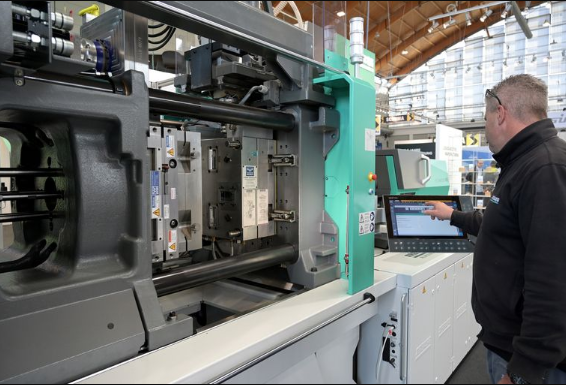
A setter, also known as a mold setter or setup technician, plays a crucial role in the injection molding process. Their primary responsibility is to ensure that the injection molding machines are properly prepared for production runs. This involves a variety of tasks to set up, maintain, and troubleshoot molds and machines. Here’s an in-depth look at what setters do in molding injection:
1. Mold Installation and Removal
Description:
- Setters are responsible for installing molds into injection molding machines and removing them when production runs are complete or when mold changes are necessary.
Tasks:
- Mounting Molds: Securely install molds onto the machine platens, ensuring proper alignment and clamping.
- Connecting Utilities: Attach and configure necessary utilities such as cooling lines, hydraulic connections, and electrical connections.
- Disassembly: Safely remove molds after production runs, ensuring all connections are properly disconnected and the mold is safely transported.
Importance:
- Proper mold installation is critical to the quality and efficiency of the injection molding process.
- Ensures quick and safe mold changes, minimizing downtime.
[elementor-template id=”4330″]
2. Machine Setup and Adjustment
Description:
- Setters configure and adjust the injection molding machine settings according to the specifications for the specific part being produced.
Tasks:
- Parameter Setting: Input parameters such as injection pressure, temperature, injection speed, and cooling time into the machine control system.
- Calibration: Calibrate the machine to ensure it operates within specified tolerances.
- Cycle Testing: Run initial test cycles to ensure the machine and mold are functioning correctly and that the parts meet quality standards.
Importance:
- Ensures that the machine operates efficiently and produces high-quality parts.
- Helps to prevent defects and ensure consistency in production.
3. Quality Control
Description:
- Setters monitor the quality of the parts being produced and make adjustments to the machine and process as necessary to maintain quality standards.
Tasks:
- Initial Part Inspection: Inspect the first few parts produced after setup to ensure they meet dimensional and cosmetic requirements.
- Ongoing Monitoring: Continuously monitor parts for defects such as flash, sink marks, voids, and warping.
- Adjustments: Make necessary adjustments to the machine settings or mold to correct any issues that arise during production.
Importance:
- Ensures that only parts that meet quality standards are produced.
- Reduces waste and rework, improving overall production efficiency.
[elementor-template id=”4331″]
4. Troubleshooting and Maintenance
Description:
- Setters troubleshoot and resolve issues that arise with the injection molding machine or mold during production.
Tasks:
- Problem Diagnosis: Identify and diagnose issues such as machine malfunctions, mold damage, or material flow problems.
- Repairs and Adjustments: Perform minor repairs and adjustments to resolve issues and minimize downtime.
- Preventive Maintenance: Conduct routine maintenance tasks to keep machines and molds in good working condition.
Importance:
- Minimizes production downtime by quickly resolving issues.
- Ensures the longevity and reliability of machines and molds.
5. Documentation and Reporting
Description:
- Setters maintain accurate records of machine setups, adjustments, and maintenance activities.
Tasks:
- Setup Sheets: Document machine settings and parameters for each production run.
- Maintenance Logs: Keep records of maintenance activities and any issues encountered during production.
- Production Reports: Report production data, including part quality, cycle times, and any deviations from standard procedures.
Importance:
- Provides valuable information for continuous improvement and troubleshooting.
- Ensures traceability and accountability in the production process.
Conclusion
Setters in injection molding are vital to the smooth and efficient operation of the production process. Their responsibilities span mold installation and removal, machine setup and adjustment, quality control, troubleshooting, maintenance, and documentation. By performing these tasks effectively, setters help ensure that the injection molding process produces high-quality parts consistently and efficiently. Their role is essential in maintaining the overall productivity and reliability of injection molding operations.
Related Conten: Injection Mold Manufacturing
 DTG Mould Trade Process |
|
| Quote: | According to sample, drawing and specific requirement. |
|---|---|
| Discussion | Mold material, cavity number, price, runner, payment, etc. |
| S/C Signature | Approval for all the items. |
| Advance | Pay 50% by T/T |
| Product Design Checking | We check the product design. If some position is not perfect, or can not be done on the mould, we will send customer the report. |
| Mold Processing | Send report to customer once each week |
| Mold Testing | Send trial samples and try-out report to customer for confirmation |
| Mold Modification | According to customer’s feedback. |
| Balance Settlement | 50% by T/T after the customer approved the trial sample and mould quality. |
| Delivery | Delivery by sea or air. The forwarder can be designated by your side. |
 |
|

